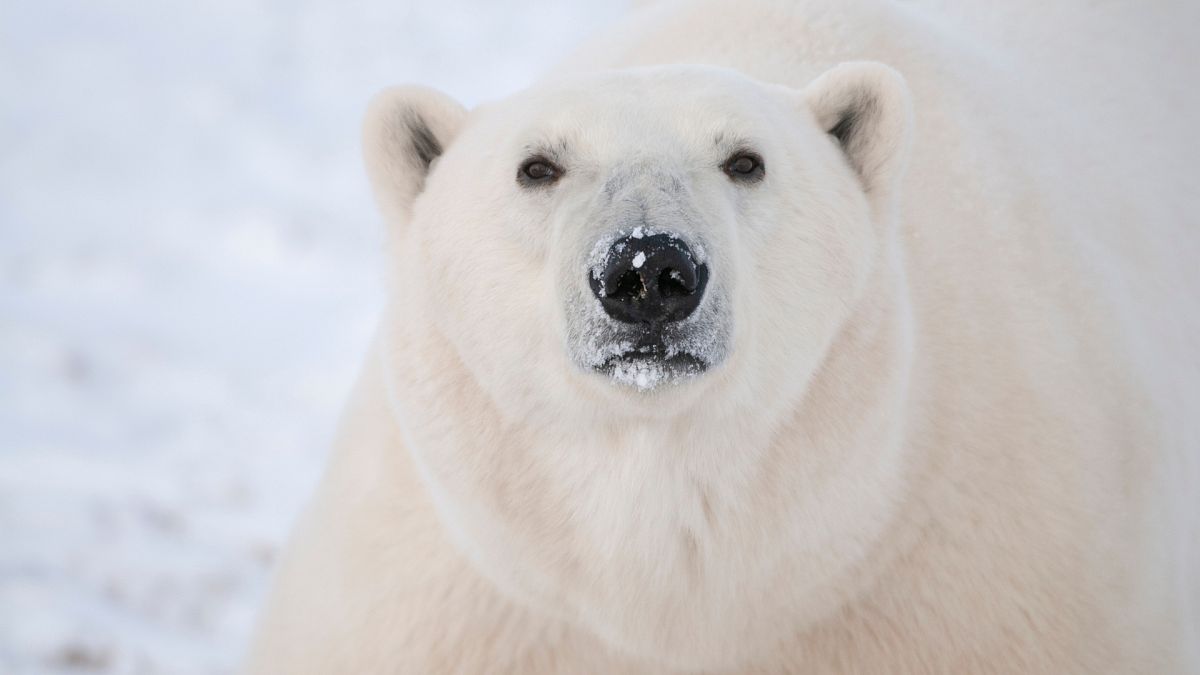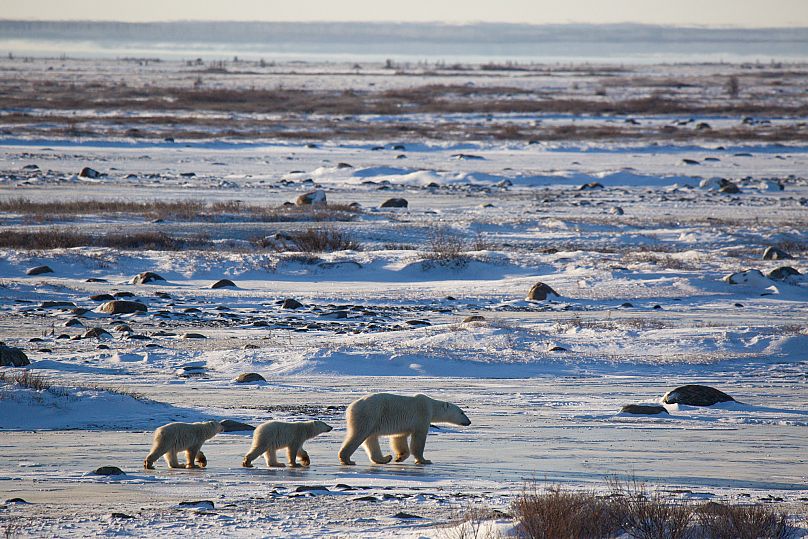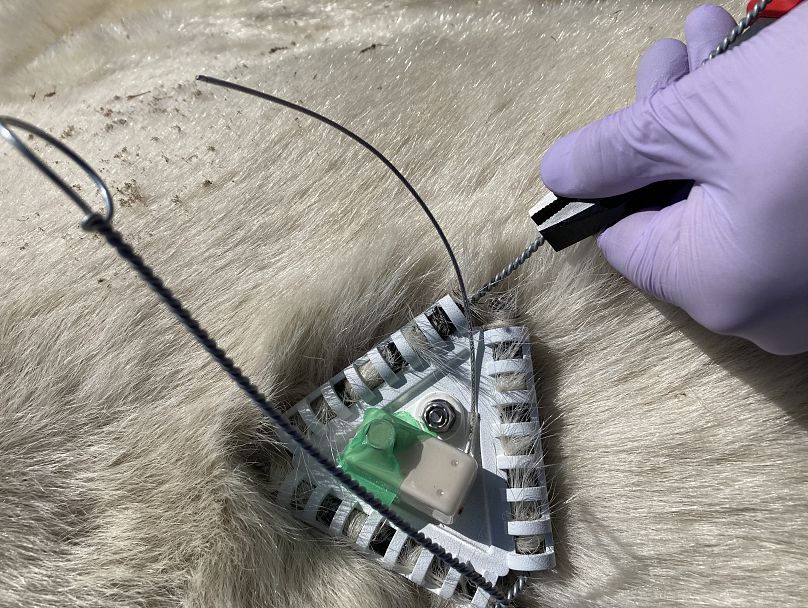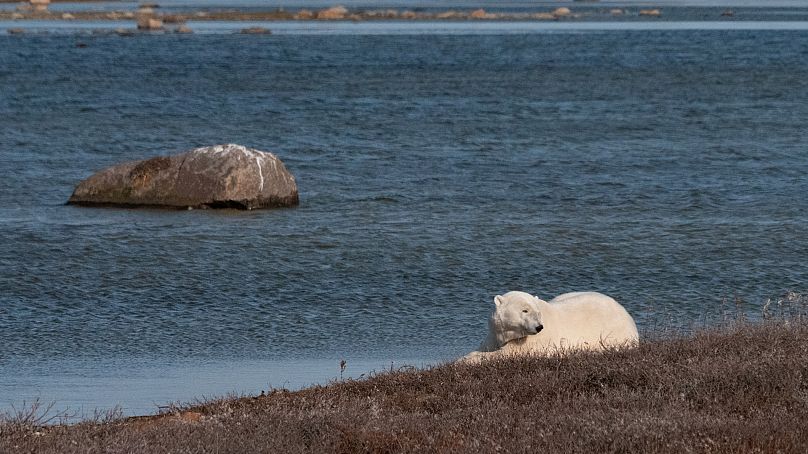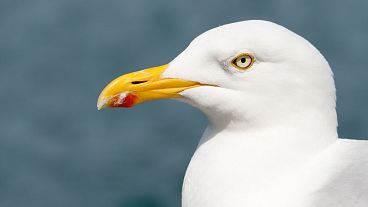Current research relies on satellite collars that can only be fitted to adult female bears.
Scientists have developed a new way of tracking polar bears and it could help us better understand how they cope with disappearing sea ice.
This breakthrough in stick-on GPS tracking tags will help researchers fill gaps in their knowledge about the behaviour or movement of polar bears like never before.
It comes as research highlights the danger these animals face from climate change. Two important groups of polar bears in Hudson Bay, Canada, face becoming locally extinct if global temperatures continue to increase, according to a report released last month.
“It's incumbent upon us to understand the impending impact [of human-induced climate change] on our natural world, so that we can make policy decisions informed by science,” lead author Professor Julienne Stroeve, University of Manitoba, said at the time.
As climate change threatens polar bears’ survival, the new tracking tech could open doors to previously hard-to-collect data that is essential for their conservation.
Why do we need better ways to track polar bears?
Efforts to develop less invasive ways to track polar bears have been in development for years with varying levels of success.
For a long time, satellite collars have been the primary method used by researchers to study their behaviour and adaptation to the consequences of climate change.
“Most of what we know about polar bear habitat - which type of habitat they prefer, such as sea ice versus land - and behaviour is based on adult female bears because the collars used to track their movements cannot be safely used on subadults or adult males,” explains Tyler Ross, lead author of a brand new study into tracking tech and researcher at York University.
Collars fall off of adult males because of their cone-shaped heads and necks. Young bears grow too rapidly for collars to be used safely.
This means little is known about subadult and adult male bears, particularly during the time they spend on sea ice when it isn’t practical to directly observe them. What limited evidence researchers do have suggests that their behaviour is different from that of adult females.
“These tags will help further our understanding of these differences, resulting in a more holistic picture of polar bear ecology and how the species is responding to their changing environment.”
It gives scientists a new tool for critical research into this vulnerable species - and for managing potentially deadly interactions with humans.
Tracking tags developed by the creators of Post-It notes
Trackers allow scientists to follow these animals even when they are far out on the sea ice or wandering in the 24-hour darkness of the Arctic winter. As technology has improved, basic GPS tags have become much smaller creating new possibilities for research.
Currently, ear tags have to be permanently attached, and implants require minor surgery to place them under the skin.
But three prototypes, recently tested on wild polar bears along the coast of Hudson Bay, Canada, could provide a more temporary and less invasive option.
The new stick-on fur tags were developed as part of the ‘Burr on Fur;’ initiative which began as a challenge from Polar Bears International to 3M scientists - the global science and manufacturing company behind Post-It notes. It called for tracking devices that are non-toxic, not damaging the skin and are resistant to extreme environmental stresses such as cold, snow and salt water.
Designed to have a minimal impact on these animals, the stick-on tags can in theory remain attached for up to 12 months in between moults of the bears’ fur. The best-performing versions of current prototypes stayed on for a maximum of 114 days.
Managing human-polar bear interactions as the climate warms
As the technology improves, researchers say it will be useful for studying polar bear behaviour during particularly important times of the year. That includes the transition periods where they move between the land and sea ice or when they come particularly close to human settlements.
It is crucial data in a changing Arctic.
“On average sea ice is melting faster than it ever has,” Ross says. The Arctic is warming up to four times faster than the rest of the world. Sea ice is vital for polar bears’ survival and global warming is forcing groups in southern areas of their range to spend longer and longer periods ashore.
“As Arctic sea ice continues to decline in both duration and extent, polar bears will be forced to remain ashore for longer periods, increasing their likelihood of encountering humans,” Ross explains.
“Currently, in some locations in the southern Canadian Arctic, polar bears that wander too close to communities are occasionally caught, transported, and released far away from human settlements - a practice designed to protect both the people and bears.
“The temporary fur tags could be affixed to these relocated polar bears, providing conservation staff with near-real-time information on the bears’ whereabouts, enabling them to take proactive measures to mitigate or prevent future human-bear encounters.”
As well as pushing bears closer to conflict with humans, this also leaves them without access to seals which are their primary food source.
But subadult and adult male bears may be responding to these changes in different ways that aren’t seen in female bears.
Understanding adaptations like altering their movement patterns, increasing their reliance on stored fat reserves or seeking alternative food sources could also help with conservation efforts.












